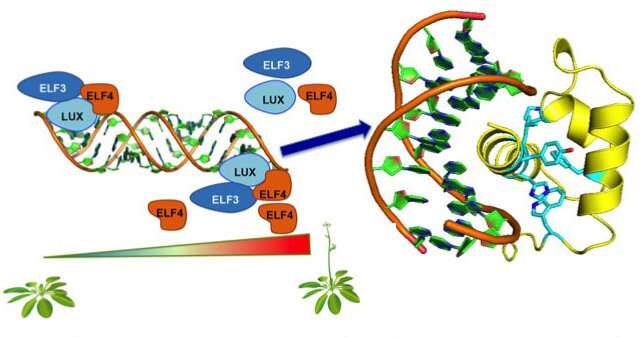Evening Complex 'thermometer proteins' regulate plant blooming

As average temperatures rise every year, it is no longer rare to see plants flower as early as February. Behind this phenomenon is a complex of proteins whose activity is controlled by temperature changes, as has just been demonstrated by researchers from the Cell and Plant Physiology Laboratory (CNRS / CEA / INRAE / Université Grenoble Alpes) and their partners.
Composed of three proteins (LUX, ELF3, and ELF4), the Evening Complex regulates the expression of genes involved in plant growth and flowering, as a function of exterior temperatures. The research team has shown, in vitro, that while all three proteins are needed for the complex to function correctly, ELF3 is the only one whose activity directly depends on temperature. When the temperature increases, ELF3 prevents the complex from binding to DNA and repressing plant growth genes. Consequently, growth proceeds. A study of the structure of LUX nonetheless demonstrated that certain mutations could alter plant sensitivity to temperature.
These findings are published in PNAS (12 March 2020).
More information: Catarina S. Silva et al. Molecular mechanisms of Evening Complex activity in Arabidopsis, Proceedings of the National Academy of Sciences (2020). DOI: 10.1073/pnas.1920972117
Journal information: Proceedings of the National Academy of Sciences
Provided by CNRS

















